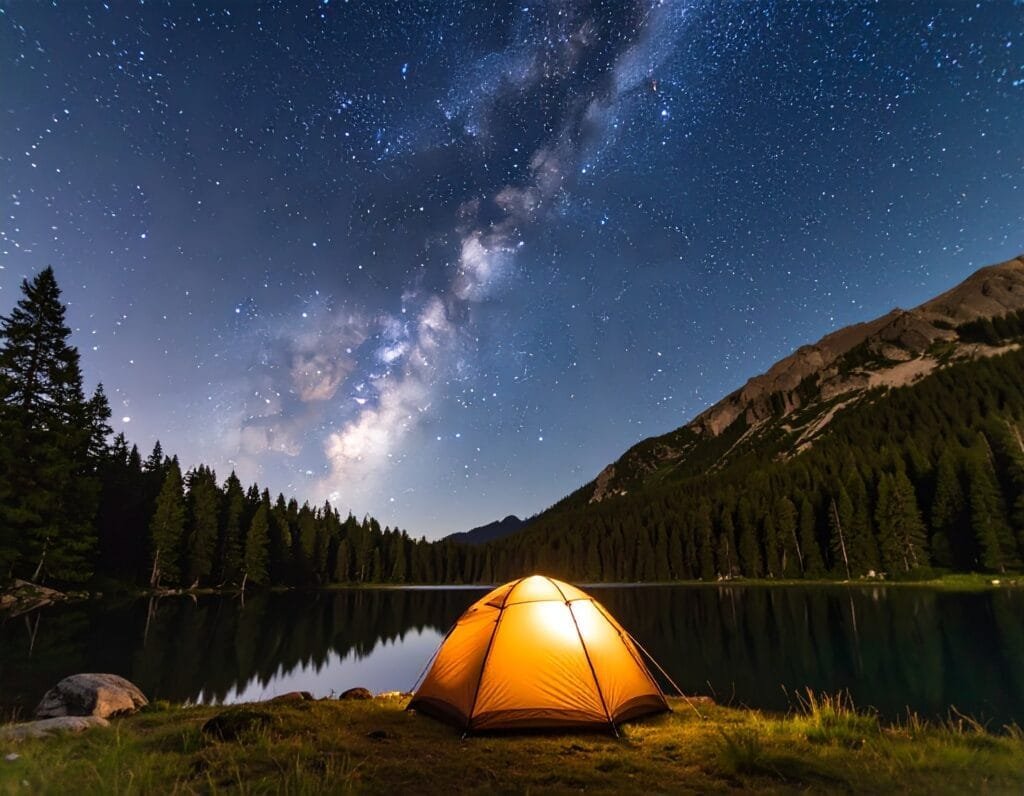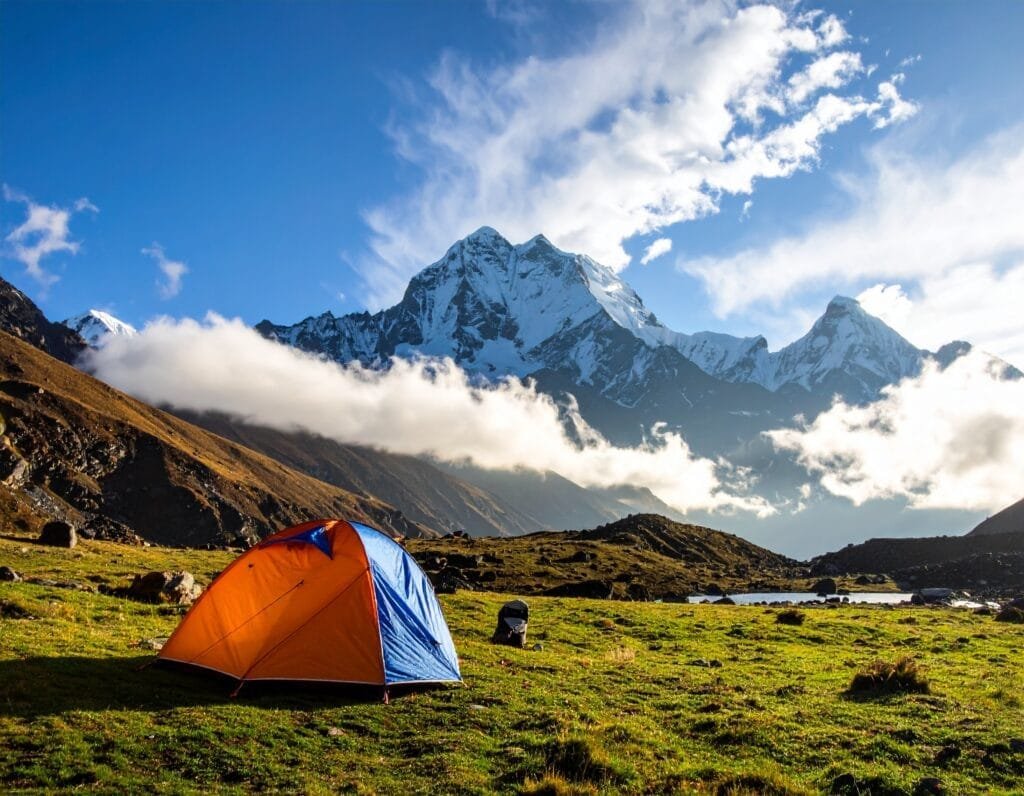Our Home Under the Stars: A Detailed Camping Guide

What does camping mean to you? For me, it’s not a vacation; it’s a way of life. It’s not an escape, but an arrival into the heart of nature. Camping is more than just pitching a tent and lighting a fire. It’s a path to self-sufficiency, to the freedom that comes with minimalism, to a respect for nature, and most importantly, a way to rediscover the fundamental “human” instinct that modern life has stolen from us.
Now, I’m going to take you away from your keyboard and on a short journey to some of the most beautiful camping destinations in the world. Afterward, I will share a detailed list of the most essential gear to ensure you can experience this magical journey safely and comfortably.
A World of Camping Experiences
When we think of camping, an image of a tent in a forest often comes to mind. However, the world offers us incredible diversity. The spirit of each landscape transforms the camping experience into something entirely new.
- Classic Forest Camping (Europe & North America): Waking up in the shade of lush green trees to the scent of damp earth and pine resin… This is perhaps the most iconic form of camping. At night, you listen to the calls of owls, and in the morning, you unzip your tent to greet the day with dew drops and filtered sunlight. From Canada’s Banff National Park to Germany’s Black Forest, this experience is the purest form of being one with nature.
- Mountain and Alpine Camping (Himalayas, Alps, Andes): This type of camping requires a bit more effort and experience, but the reward is priceless. Imagine setting up your tent thousands of meters high, above the clouds. The air is crisper, and the silence is deeper. Here, you understand how majestic nature is and how small we are in comparison. The Huayhuash Circuit in Peru or the Annapurna Base Camp in Nepal are the pinnacles of this experience.

- Beach Camping (Australia, Thailand, Mediterranean): The smell of saltwater and the rhythmic sound of the waves… Beach camping offers incredible relaxation, especially in warm climates. You can cool off in the sea during the day and watch the endless ocean by a campfire at night. The southern coasts of Turkey, the secluded islands of Thailand, or the wild shores of Western Australia are fantastic locations for this.
- Desert Camping (Wadi Rum, Sahara, Atacama): Scorching heat during the day, freezing cold at night… The desert may not seem hospitable at first glance. However, watching the sky on a desert night, even just once in your life, is an invaluable experience. In these landscapes with zero light pollution, the stars feel so close you could almost reach out and touch them.
This diversity forms the universal language of camping. No matter where you are, a tent, a sleeping bag, and a fire connect you with any other camper anywhere in the world.
Your Home in Your Backpack: A Detailed Gear Guide
So, what should we bring to prevent this magical experience from turning into a nightmare? To avoid saying, “I wish I had brought that,” or “I carried this for nothing,” I’m sharing the most essential gear list with you.
1. SHELTER: YOUR SAFE HARBOR
This category forms the foundation of your home in the wild. It consists of three main components where you should never compromise on quality.
Tent: Your tent is your fortress. It protects you from wind, rain, and insects. Things to consider when choosing one:
- Season Rating: For temperate climates like those in Europe, a 3-season tent is usually sufficient. Pay attention to its waterproof rating (often in mm; 2000mm and above is ideal) and wind resistance. For winter camping or harsh mountain conditions, a 4-season tent is a must.
- Capacity: Always choose a tent with a capacity rated for one person more than your group size. For example, if there are two of you, a 3-person tent provides extra space for gear and a more comfortable environment.
- Weight: If you’re planning a trip with long hikes (trekking/backpacking), the tent’s weight is crucial. “Ultralight” models can be expensive, but your back will thank you.
Sleeping Bag: A good night’s sleep means energy for the next day. The choice of a sleeping bag depends on the nighttime temperatures of your destination.
- Temperature Ratings: Sleeping bags typically have three ratings: Comfort, Limit, and Extreme. The Comfort rating is the most important one for you. Choose a bag with a comfort rating a few degrees lower than the coldest temperature you expect.
- Fill Material: Down-fill bags are lighter, more compressible, and provide better insulation, but they lose all their properties when wet. Synthetic-fill bags are heavier but continue to insulate even when damp and are more affordable.
Sleeping Pad (Mat): Often overlooked by novice campers, but just as crucial as a sleeping bag. The primary job of a mat is not just comfort but insulation from the cold ground. It prevents you from losing body heat.
- Foam Pads: Cheap, durable, and can’t be punctured, but they are bulkier.
- Inflatable Pads: Much more comfortable and pack down smaller, but they risk being punctured. Always carry a repair kit.
2. KITCHEN: GOURMET EXPERIENCES IN NATURE
No luxury restaurant can match the flavor of a meal cooked over a campfire. Here’s what you need to achieve that taste:
- Camping Stove and Fuel: A lifesaver in places where campfires are forbidden or difficult to build. Small, lightweight stoves that use gas canisters are the most popular. Always bring a spare canister.
- Pot/Pan Set: Sets made from lightweight materials like aluminum or titanium that nest inside each other save space.
- Cutlery Set (Fork, Knife, Spoon): Instead of plastic, you can opt for bamboo or metal. A “spork” (a spoon-fork hybrid) is a fantastic invention.
- Mug/Cup: A metal or collapsible silicone mug is perfect, especially for your morning coffee.
- Water Treatment System: This is not a luxury; it’s a necessity! A water filter or purification tablets can be life-saving, especially on long trips or when drinking from unknown water sources. Do not neglect this.
3. SAFETY AND NAVIGATION: PRECAUTION IS EVERYTHING
- Headlamp: Far more practical than a flashlight as it provides hands-free illumination. Always bring spare batteries.
- First-Aid Kit: A basic kit containing bandages, antiseptic wipes, gauze, and painkillers.
- Navigation Tools: Assume your phone might run out of battery or have no signal. Knowing how to use a physical map of the area and a compass is vital. A GPS device or offline maps on your phone are good additional backups.
- Multi-tool/Pocket Knife: A Swiss Army knife or a Leatherman-style tool is useful in countless situations, from repairs to food prep. A foldable camp shovel can also be useful for digging in snow or dirt.
- Whistle and Power Bank: A whistle is the most effective way to make yourself heard if you get lost. A power bank is a reliable backup for your electronic devices.
4. COMFORT
- Camping Chair: The joy of sitting in a comfortable chair by the fire after a long hike is priceless.
- Hammock: A nap in a hammock stretched between two trees… What more could you ask for?
Final Word: Explore Without a Trace
Camping reminds us that we are not owners of this world, but a part of it. That’s why the most important piece of gear isn’t in our backpack, but in our minds: the “Leave No Trace” principle. Picking up our trash, respecting wildlife, being careful with fire, and leaving the campsite cleaner than we found it are the foundations of this culture.
The world is like an endless campground waiting to be discovered. With every tent you pitch and every fire you light, you collect a new story. I hope this guide serves as a spark for you to write your own stories. Pack your bag, leave your fears behind, and answer the call of the wild.
See you under the stars!